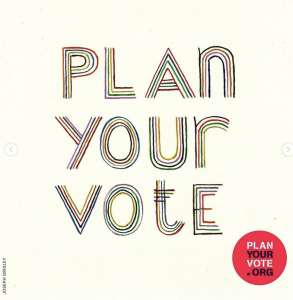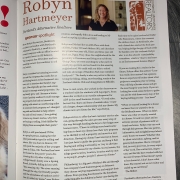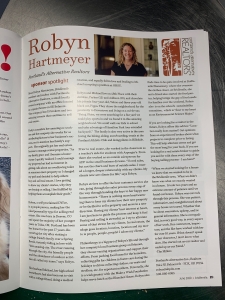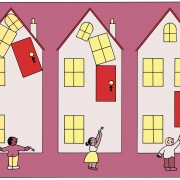As it gets more expensive to live in Portland, officials have been pondering: What to do when the city’s vaunted neighborhood associations seem to act more like swank homeowner  associations?
associations?
The answer reached by a government committee – to erase neighborhood associations from the city code altogether – has dozens of neighborhood leaders sounding the alarm that their renowned system of civic engagement is under threat.
That proposed undoing has board members of Portland’s nearly 100 neighborhood associations drawing battle lines against the city committee, officials in the Office of Community & Civic Life – the bureau that works with neighborhood associations – and the bureau’s commissioner-in-charge, Chloe Eudaly.
It has also surfaced long-simmering tensions. Neighborhood activists view themselves as representatives of grassroots Portlanders and the distinctive parts of town they inhabit. Detractors see the associations as entrenched, overly powerful voices for homeowners, who tend to be older, white and opposed to housing density, homeless shelters and other development helpful to a growing city’s health.
Sam Stuckey, for example, said neighborhood associations “are just there to be obstructionist and delay housing we desperately need.” Despite that qualm, Stuckey, a 32-year-old architect, sits on the Mill Park Neighborhood Association board.
“I think there’s some level of truth to that,” said Stan Penkin, chairman of the Pearl District Neighborhood Association, though that line of thinking fails to acknowledge “all the things that neighborhoods do that are positive.”
John Legler, a board member of the Creston-Kenilworth association, sees it differently. In his view, the city wants to “get rid of neighborhood associations because we cause too much trouble” over land use issues. If the committee gets its way, he said, “We will exist in form but without legitimacy.”
At a meeting of the committee in June, many board members also insisted their groups are more diverse than critics acknowledge.
“I am neither old, nor rich, nor white,” said Elizabeth Deal, 33, a nurse and leader of the King Neighborhood Association who is Asian.
Erasure of the associations from city code would have sweeping effects, though the full extent is unclear. Officials say the worries of neighborhood association champions are overblown.
At its core, the change would remove the special powers of neighborhoods to officially weigh in on city government actions. The most notable of those are zoning decisions adopted by the City Council, often at real estate developers’ urging. Currently, neighborhood associations must be consulted on such decisions and may formally appeal them at no cost.
Activists also worry the update is a pretext to cut off neighborhood associations from city-paid event insurance. They say doing so would prevent family-friendly events like block parties and also push some associations into financial ruin.
Neighborhood matters would also be less transparent, as the committee plans to remove requirements that associations allow the public to attend board meetings, make a record of votes and preserve copies of documents.
Activists have also cried foul about the code change process. Neighborhood board members say they were not notified of committee meetings. While officials are adamant notices were sent, members of associations across the city said, without fail, that was untrue. And a survey about the code change, which garnered more than 1,000 responses, was seen as insufficient by officials because 69 percent of respondents were white.
In a challenge to the conventions that have underscored more than 40 years of local activism, Eudaly, the commissioner in charge of outreach to neighborhoods, said many Portlanders view themselves less as members of neighborhoods than as a part of ethnic, religious or other non-geographic affinity groups.
“Personally, I am more likely to identify as someone in the disability community or as a renter than as a neighborhood resident,” the commissioner said.
Winta Yohannes, Eudaly’s aide assigned to the code change effort, said the complaints of neighborhood association board members do not reflect Portlanders’ views. “Why should we elevate them over other groups?” Yohannes said.
Asked to provide an example of another group that should be on equal footing, Yohannes said Portland United Against Hate, a coalition of 70 organizations that track and respond to “acts of hate,” according to a city webpage.
 Comments such as those have led neighborhood activists who are white or not religious or don’t speak another language to ask: What group speaks for me if not my neighborhood association?
Comments such as those have led neighborhood activists who are white or not religious or don’t speak another language to ask: What group speaks for me if not my neighborhood association?
The proposed code strongly states Portland is an inclusive, welcoming city. It directs the civics bureau to connect Portlanders of all backgrounds with their government, facilitate discussions and develop “learning opportunities that focus on culturally-empowering civic engagement through community-based partnerships.”
Neighborhood association leaders say those are admirable goals but fail to acknowledge the role that neighborhoods play in making Portland vibrant. Far from being heartless NIMBYs, neighborhood leaders say they are instead focused on the mundane but important work that City Hall mostly ignores.
Consider Allen Field. His foray into neighborhood politics began 15 years ago over a typical small-time issue: dog parks.
The board of the Richmond Neighborhood Association was stacked with “dog haters,” said Field, 58, an attorney in private practice. So, he ran for election to the board and recruited other canine admirers to do so. The slate won and used the association’s influence to support the designation of a section at Sewallcrest Park for dogs to roam off-leash.
As a process-oriented lawyer, Field said he is greatly concerned about the city’s plan to remove open records and meetings requirements from applying to neighborhood associations.
“I want things to be open and transparent,” he said. “I believe in notice and being heard. Due process rights.”
Being active in neighborhood matters is rarely about complex land use decisions, he added. Instead, his involvement focuses on graffiti removal, coordinating movie screenings in public parks, trash clean-ups and tending community gardens.
“We’re a city of neighborhoods,” Field said. “And neighborhood associations do things that no other groups do.”
One of the things neighborhood associations do is slow or stop development.
Take leafy neighborhoods like Laurelhurst, where residents shielded themselves from development by seeking a historical area designation. Or Eastmoreland, where neighborhood leaders stopped construction of two homes by launching a protest against the felling of three sequoia trees. And the Mt. Scott-Arleta neighborhood, where bitter opposition to a homeless shelter, spurred on by a neighborhood association leader, has complicated the project.
Using their powers to appeal zoning decisions free of charge, neighborhood associations like those in the Pearl District or Old Town have tried to stop construction of office and condominium towers with varied success.
Critics note those boards may appeal free – and therefore slow developments’ progress – even if the challenges are later deemed frivolous. The fees are waived even for neighborhoods where residents have pooled funds to hire land-use attorneys who charge tens of thousands of dollars to challenge housing density efforts.
Housing and renter advocates have an ally in Eudaly, who said the city government needs a new paradigm for engaging residents.
Yet concerns that the city wants to eliminate neighborhood associations are off the mark, she said. The groups will continue to exist and be “a critical part of what we do,” Eudaly said, adding that the notion she wishes to undermine neighborhood associations is “absurd.”
Suk Rhee, director of the civics office, said the code change is not about “the fate of neighborhood associations” and reducing the groups’ influence “is not a topic that we’ve had.”
The code change committee is supposed to recommend updated language to the City Council in July. It’s unclear if it will. The panel was scheduled to approve the changes at its meeting on June 26, but it could not establish a quorum necessary to hold a vote when a majority of the members failed to attend.
Penkin, the Pearl District leader, said neighborhood associations, ethnic and religious groups and immigrant communities tend to advocate for the same neighborly ideals. Divides are mostly a matter of perception, he said, and passions tend to erupt only when broad changes are afoot.
“This goes back many, many years,” Penkin said. “Everything’s complicated.”
View the full article here at The Oregonian
 in our communities.
in our communities. place to volunteer and get involved in the community. So if you’re still anxiously deciding what to do for Thanksgiving maybe start here, start small and give back.
place to volunteer and get involved in the community. So if you’re still anxiously deciding what to do for Thanksgiving maybe start here, start small and give back.







/s3.amazonaws.com/arc-wordpress-client-uploads/wweek/wp-content/uploads/2018/05/22134054/4430_Housing_Neighborhood_Hollywood_Single-Family_Walker-Stockly_6.jpg)




 Sustainability was another key aspect in the design. “The building’s many skylights, each with a different orientation and size, provide natural lighting for the museum’s spaces at all times of the year; its sand-covered roof greatly reduces the building’s summer heat load; and a low-energy, zero-emission ground-source heat pump system replaces traditional air conditioning,” states the firm.
Sustainability was another key aspect in the design. “The building’s many skylights, each with a different orientation and size, provide natural lighting for the museum’s spaces at all times of the year; its sand-covered roof greatly reduces the building’s summer heat load; and a low-energy, zero-emission ground-source heat pump system replaces traditional air conditioning,” states the firm. associations?
associations? Comments such as those have led neighborhood activists who are white or not religious or don’t speak another language to ask: What group speaks for me if not my neighborhood association?
Comments such as those have led neighborhood activists who are white or not religious or don’t speak another language to ask: What group speaks for me if not my neighborhood association? sense of community, and simply a good quality of life. For more on how we define “cool” and what exactly counts as a suburb, check out our
sense of community, and simply a good quality of life. For more on how we define “cool” and what exactly counts as a suburb, check out our 
 recreated scenes from movies and TV with little paper dolls, began to fill the yard with pop-culture characters. “Familiar stuff brings more smiles to people’s faces,” he says.
recreated scenes from movies and TV with little paper dolls, began to fill the yard with pop-culture characters. “Familiar stuff brings more smiles to people’s faces,” he says.